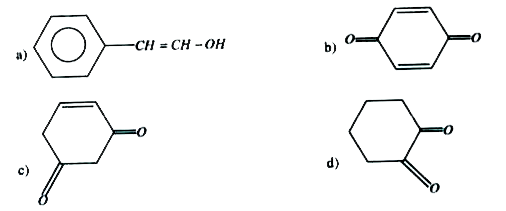Among the reactions,
F2(g)+2e−→2F−(g) and
Cl2(g)+2e−→2Cl−(g) which is more feasible ? Give the reason. Solution in Telugu
F2(g)+2e−→2F−(g) is easy.
Though electron gain enthalpy of Cl(g) to give Cl−(g) is more than that of F(g) to give the bond dissociation of F2(g) is very less than that of Cl2(g).
Topper's Solved these Questions
- PERIODIC CLASSIFICATIONBOOK - AAKASH SERIESCHAPTER - PERIODIC CLASSIFICATIONEXERCISE - SUBJECTIVE EXERCISE - 1 (LONG ANSWER QUESTIONS)
10 Videos
- PERIODIC CLASSIFICATIONBOOK - AAKASH SERIESCHAPTER - PERIODIC CLASSIFICATIONEXERCISE - SUBJECTIVE EXERCISE - 1 (SHORT ANSWER QUESTIONS)
9 Videos
- ISOMERISM BOOK - AAKASH SERIESCHAPTER - ISOMERISM EXERCISE - ADDITIONAL PRACTICE EXERCISE ( PRACTICE SHEET (ADVANCED) INTEGER TYPE QUESTIONS)
10 Videos
- PERIODIC PROPERTIESBOOK - AAKASH SERIESCHAPTER - PERIODIC PROPERTIESEXERCISE - LEVEL-II (TYPE -II) (PRACTICE SHEET -3 (SUBJECTIVE/ ANALYTICAL TYPE QUESTIONS ))
8 Videos
Similar Questions
Discuss in detail about the classification of elements by Mendeleeff,
View SolutionWhat is the need to classify elements ?
View SolutionTautomerism is exhibited by X number of compounds among the following. What is X.

View SolutionWhat is the valency possible to Arsenic with respect to oxygen and hydrogen?
View SolutionProcess (A): F_(2(g)) +2e^(-) rarr 2F_((g))^(-) Process (B): Cl_(2(g)) +2e^(-) rarr 2CI_((g))^(-) Which of these processes is easy ? Why?
View SolutionStandard reduction potentials for the half reactions are given below :
F2(g)+2e−→2F−(aq),E∘=+2.85 V
Cl2(g)+2e−→2Cl−(aq),E∘=+1.36 V
Br2(g)+2e−→2Br−(aq),E∘=+1.06 V
I2(g)+2e−→2I−(aq),E∘=+0.53 V
The strongest oxidising and reducing agents respectivity are :
View SolutionFor the reaction : Cl_(2)(g) to 2Cl_(g)
View SolutionΔHfor the reaction Clg+Clg→Cl2(g) will be .
View SolutionStandard reduction potential of the half reactions are given below:
F2(g)+2e−→2F−aqEo=+2.85VCl2(g)+2e−→2Cl−aqE0=+1.36VBr2(l)+2e−→2Br−aqE0=1.06VI2(s)+2e−→2I−aqE0=+0.53V
The strongest oxidising and reducing agents respec-tively are:
View SolutionAmong the reactions, F_(2_((g)))+2bareto2F^(-)(g) and Cl_(2_((g)))+2bareto2Cl^(-)(g) , which is more feasible? Why?
View SolutionFor the reaction 2Cl_((g)) to Cl_(2 (g)), the signs of DeltaH and Delta S respectively are
View SolutionFor the reaction 2Cl_((g)) to Cl_(2 (g)), the signs of DeltaH and Delta S respectively are
View SolutionFor the reaction 2Cl(g)→Cl2(g), the signs of ΔHandΔS respectively are
View Solution[" Find exothermic reaction : "],[" (1) "F_((g))^(-)rarr F_((g))+e^(-)],[" (2) "Be_((g))+e^(-)rarr Be_((g))^(-)],[" (3) "O_((g))+e^(-)rarr O_((g))^(-)],[" (4) "O_((g))+2e^(-)rarr O_((g))^(2-)]
View SolutionAmong the reactions, F_(2(g)) + 2e^(-) to 2F_((g))^(-) and Cl_(2(g)) + 2e^(-) to 2Cl_((g))^(-) which is more feasible ? Give the reason.
View Solution
